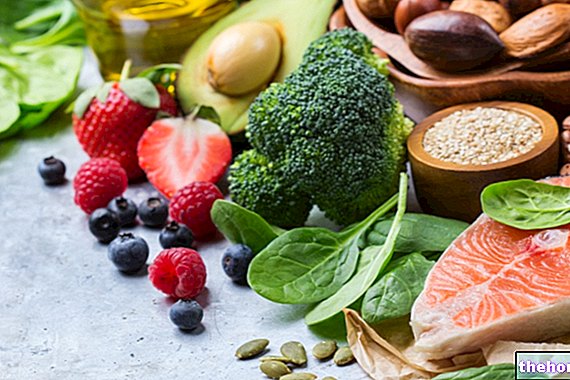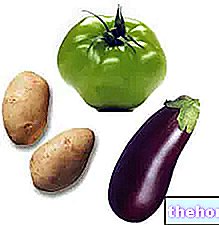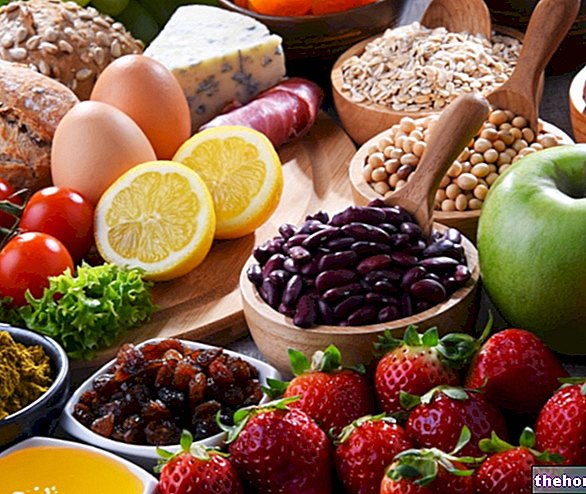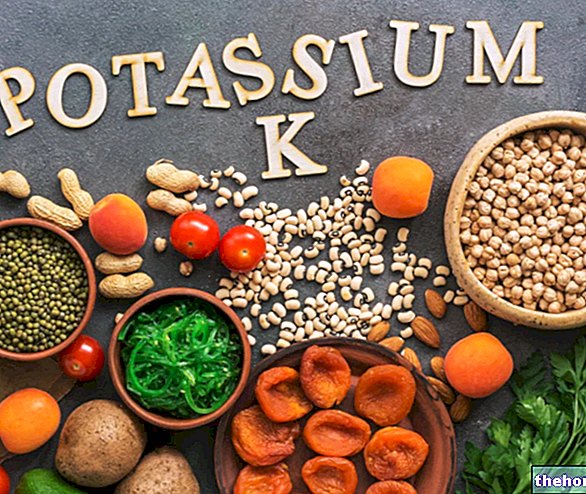Edited by Doctor Giancarlo Monteforte
Fructose is a natural monosaccharide with peculiar metabolic properties. These properties are essentially due to 2 factors:
- Low glycemic index
- Entry into glycolysis by bypassing the regulation of the phosphofructokinase enzyme (which catalyzes the phosphorylation of glucose 6 phosphate into fructose 1.6 bisphosphate, determining the definitive and irreversible introduction of glucose into the glycolytic process; this reaction is considered the limiting stage for the speed of the whole glycolysis).
Intestinal absorption
All monosaccharides (therefore also fructose) are absorbed in the fast and released into the portal circulation. Fructose is absorbed by enterocytes by diffusion facilitated by a specific carrier (GLUT5) located on the apical membrane; on the basolateral membrane there is instead another carrier (GLUT2) which introduces fructose into the circulation (fig. n. 1). GLUT5 has a Km = 5, therefore it easily saturates, for this reason the ingestion of large quantities of fructose can be followed by intestinal disorders such as bloating and abdominal pain, diarrhea.

The entry of fructose into the cells of all tissues and organs is mediated by GLUT5 and is independent of insulin.
Fructose metabolism
There are two metabolic pathways responsible for the metabolism of fructose, a specific pathway and a nonspecific pathway.
- The specific pathway: liver and kidney (box 1). It is characterized by two enzymes: fructokinase and aldolase B. Fructokinase catalyzes the phosphorylation of fructose to fructose 1 phosphate, which is split into two trioses: glyceraldehyde and dihydroxyacetonphosphate. The glyceraldehyde is phosphorylated by the triose kinase and is released into glycolysis, the dihydroxyacetonphosphate is converted into glyceraldehyde.
- The non-specific pathway: adipose tissue, skeletal muscle, heart (box2). It is made up of enzymes that metabolize gucose: hexokinase, phosphofructokinase, aldolase A.
The specific route is much more efficient than the non-specific route, the latter being inhibited by glucose. In the adipose tissue, given the almost zero concentration of glucose, there is no competition between glucose and fructose and this is easily metabolized in the non-specific route.


Box 1. Hepatic metabolism of fructose
Box 2. Extra-hepatic metabolism of fructose
Fructose is phosphorylated by fructokinase and then cleaved by aldolase B. The trioses formed are released into glycolysis at the level of triose phosphates, bypassing the regulation of phosphofructokinase. Green arrows indicate the uncontrolled flow of fructose in glycolysis. Depending on metabolic conditions trioses can be condensed into glucose to replenish hepatic glycogenosynthesis.
Fructose is metabolized by the same enzymes that metabolize glucose: hexokinase and aldolase A. This metabolic pathway is activated by the presence of glucose.
Unregulated glycolysis: fructose-mediated metabolic imbalances
The main control of the glycolytic pathway is the phosphofructokinase enzyme, fructose escapes this control and this can lead to an uncontrolled accumulation of intermediate metabolites.
Metabolic consequences:
accumulation of fructose 1 phosphate → ADP accumulation → increased purine catabolism
lactate accumulation → acidosis
acetylCoA accumulation → ketone bodies, lipogenesis
accumulate glycerol → lipogenesis
All this from a clinical point of view translates into:
- atherogenic lipid and lipoprotein profile
- hyperuricemia
- metabolic syndrome
CONTINUE: endocrine properties of fructose "
Other Foods - Sweeteners Acesulfame K Aspartame Sugar beet Sugar cane Sodium cyclamate Dextrose Sweeteners Erythritol Fructose Maltose Mannitol Molasses Saccharin Saccharose Maple syrup Agave syrup Fructose syrup Glucose syrup Sugar sorbitol Articles Stevia Sucralitol sugar SWEETENERS Categories Alcoholic Foods Meat Cereals and derivatives Sweeteners Sweets Offal Fruit Dried fruit Milk and Legumes Oils and Fats Fish and fishery products Salami Spices Vegetables Health recipes Appetizers Bread, Pizza and Brioche First courses Second courses Vegetables and Salads Sweets and Desserts Ice cream and sorbets Syrups, liqueurs and grappas Basic Preparations ---- In the Kitchen with leftovers Carnival recipes Christmas recipes Light diet recipes tici Recipes for the Holidays Recipes for Valentine's Day Vegetarian Recipes Protein Recipes Regional Recipes Vegan Recipes



























